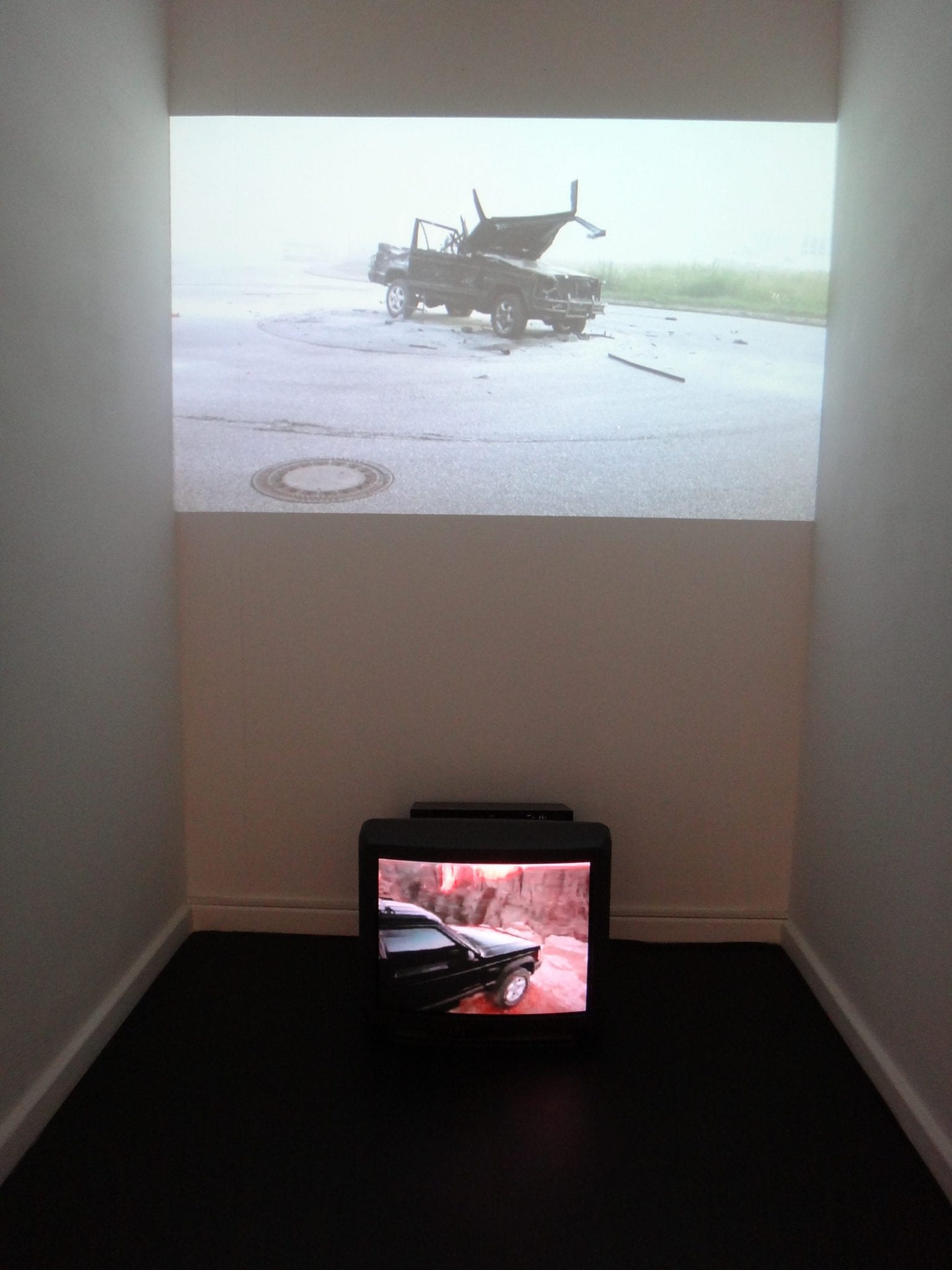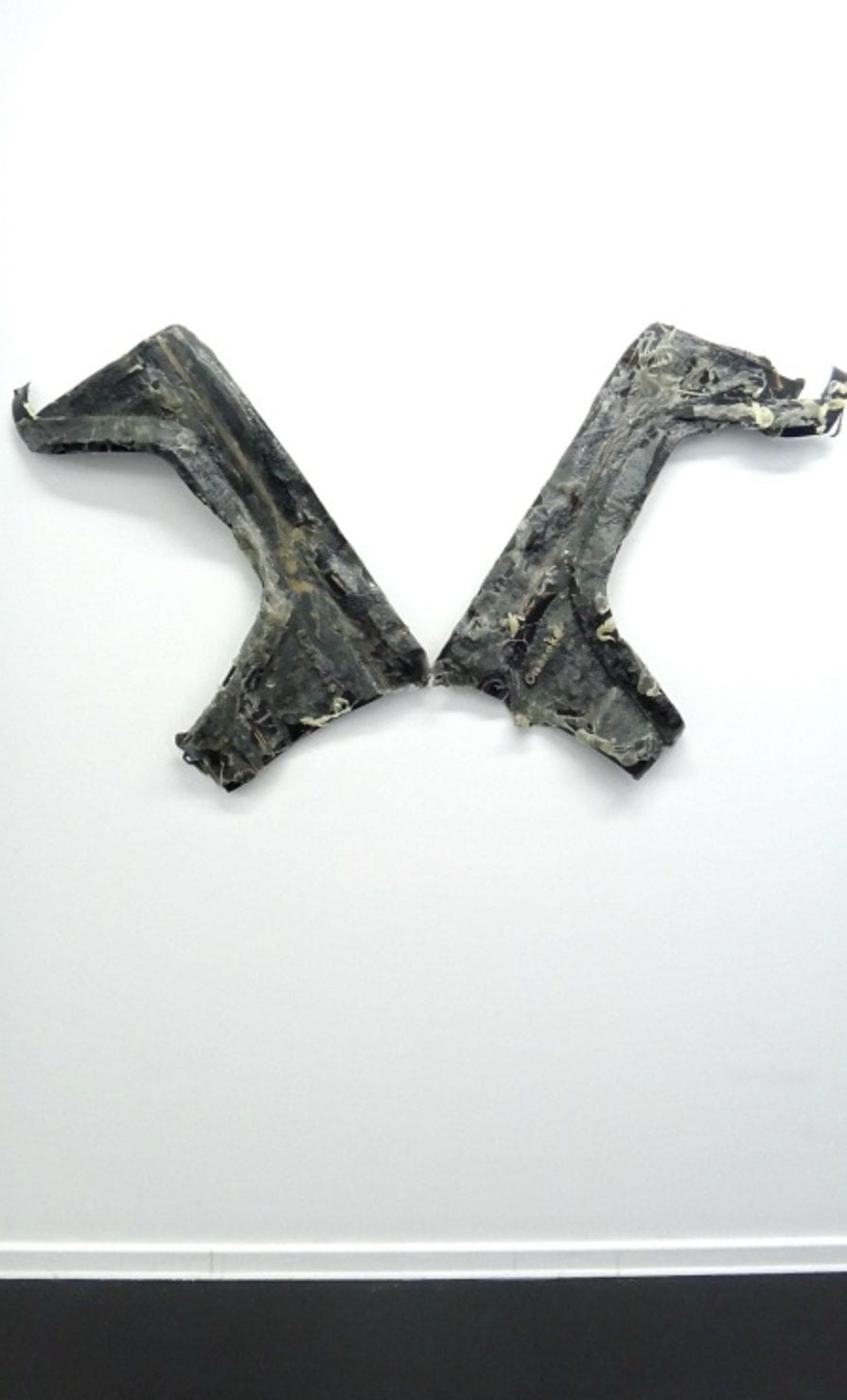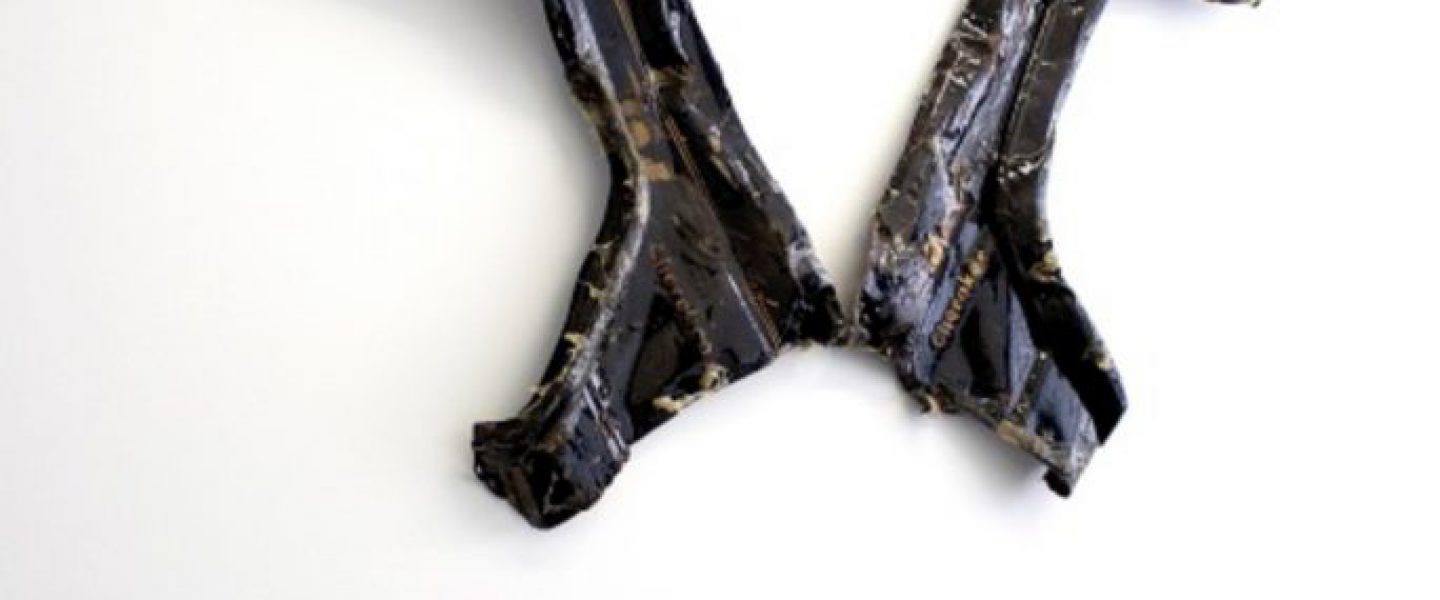Origin is Absent
2011
A two-channel video displayed on tv (commercial) and projected on the wall (destruction) 3 min 33

Origin is Absent, 2011 – exhibited at the Levy Gallery Berlin in 2011 – shows a group of unnamed actors violently destroying a Jeep Cherokee, named after a tribal community in America parked in a rural landscape. The video of the destruction was displayed next to a time-synched 1990s commercial for the same car.

The video works were displayed next to burned car wings, relicts of the destructive performance documented in the video, covered in hard candy. Over the course of the exhibition of two months, the translucent candy crystallized over the car part with the name of the car imprinted. A material transformation covered the solid man-made material and an amalgamation of car, black carbon and sugar remains.

Manifesto (The Things We Make, Make US)
2011
Video
Origin is Absent is a multifaceted performance, video and sculptural work derived from the initial destruction of a black Jeep Cherokee. The video component documents the performance of ten participants (of various backgrounds and gender, including Julius von Bismarck and Felix Kiessling) wrecking the car in a violent and determined manner woven together with footage from a 2003 Jeep Cherokee commercial. The happening was vengeful in appearance and symbolic in nature, channeling energy that was reminiscent of a revolution. Rio Reiser famously sang “Macht kaputt, was Euch kaputt macht,” (“destroy what destroys you” ) which echoed the anti-establishment sentiments of the early 1970’s. As a literal interpretation of this mentality Origin is Absent was a revolt of sorts; the car taking on the tangible role of capitalism and consumerism at large.
Since the car’s conception in 1941, the Jeep has been an American symbol of rugged untamed masculinity. It was the first of its kind with off-roading capabilities and was originally designed for military use and adventure seekers. Within American vernacular, the word Jeep elicits the image of unconstrained wheels rolling over fields and through mud, a direct relation to the way the car has been positioned in advertising. Unlike its military predecessors, The Jeep Cherokee is compact and designed for the masses of mainstream America, evolving into an icon of unadulterated freedom in today’s urban and suburban lifestyle. It enables the owner (or at least claims to) to carve out their own path; in essence, to live the American dream.
In order to relate this aura of authentic American to the public, the brand name was derived from a Native American tribe of the Cherokees. While the allocation of a cultural term to a consumer good is commonplace in American marketing, there is a certain perversion with the coupling of this particular name and product. The Cherokee tribe has a complicated and dark history in relation to the American military, most notoriously, its involvement with the Trail of Tears which resulted in the death of thousands. Origin is Absent is not about the trail of tears specifically, but positions The Jeep as emblematic of the complex relationship the US has with Native Americans, and this relationship, when juxtaposed with a brand such as Jeep, speaks to the casualness with which the US capitalist society approaches ethnic and cultural issues with insensitivity for the sake of profit. It is an issue of hubris that can be applied to much of American foreign relations, both military based (ie: the war in Iraq) and economic (ie: the globalized brand of McDonalds). It is cultural off-roading.
The project exists within a long lineage of deconstructivism, the process of reassessing and recontextualizing cultural normative with a visual tendency towards deformation. French philosopher and deconstructionism pioneer, Jaques Derrida has said: “Deconstructions are ways of accounting for the main assumptions common to the culture, common to what we call Western culture.” The automobile is a western icon, and by connecting the opposing images of car destroying nature and people destroying the car, the video undermines our initial understanding of the car’s moral value system.
